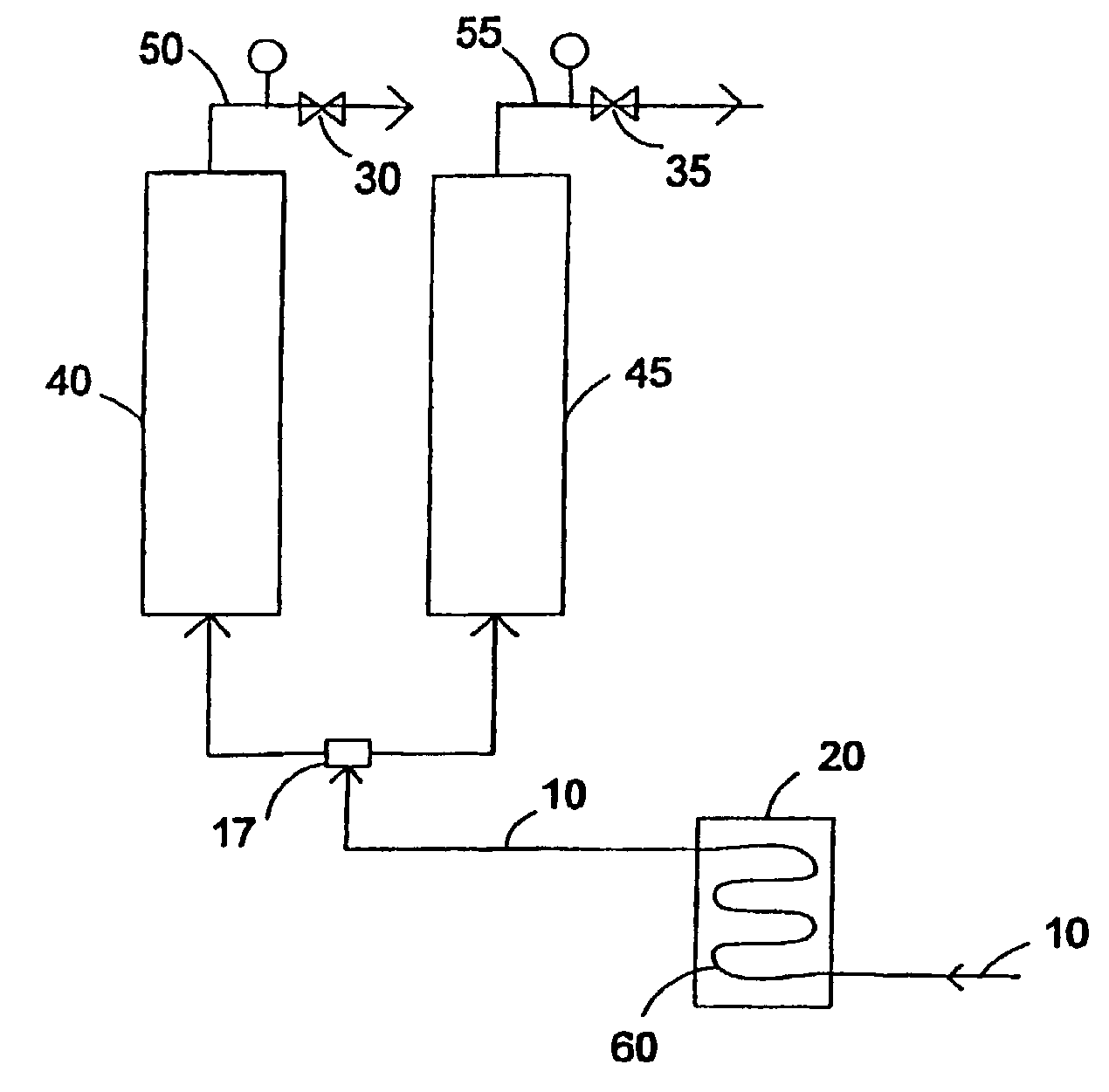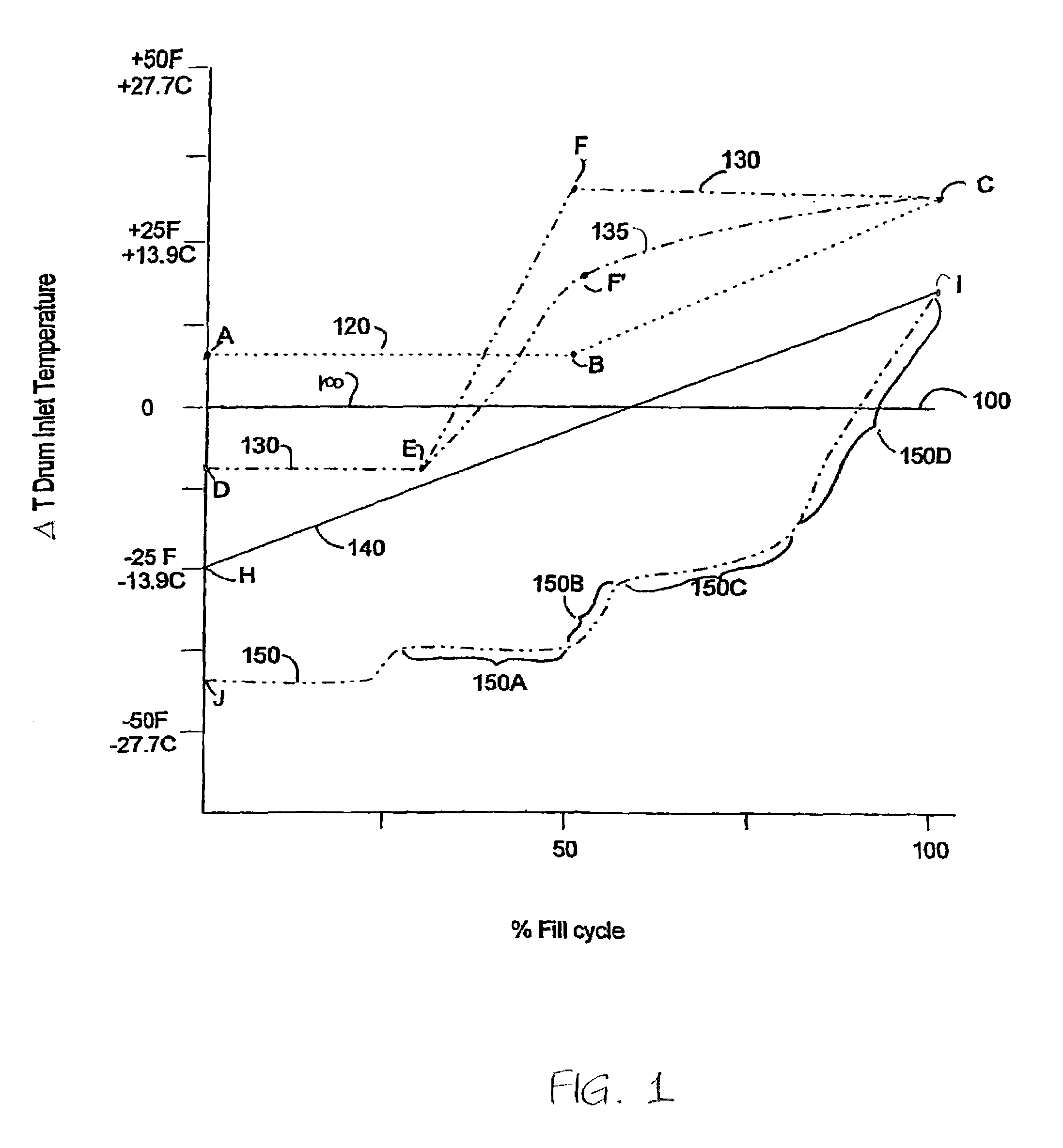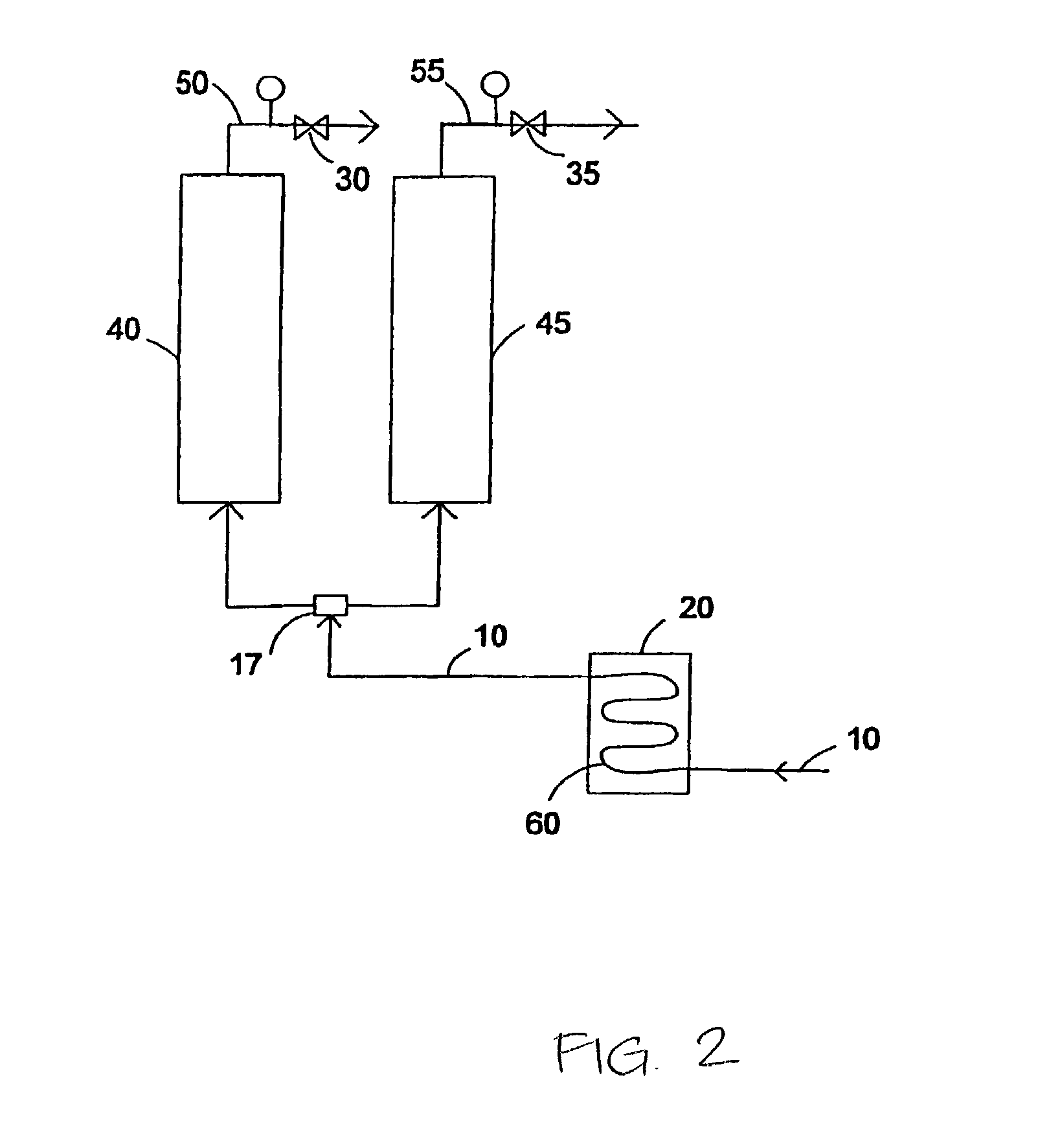Process for producing coke
a coke and coke technology, applied in the coke carbonaceous material field, can solve the problems of inconsistent coke quality, high volatile matter formation, inconsistent coke strength, porosity and particle size, etc., and achieve the effect of improving coke operation and/or coke quality
- Summary
- Abstract
- Description
- Claims
- Application Information
AI Technical Summary
Benefits of technology
Problems solved by technology
Method used
Image
Examples
example 4
[0083]A coking process was conducted utilizing the coking vessels and feedstock described in the previous Examples 1-3. For Example 4, a coking process according to preferred aspects of the invention was performed. The results were compared to those from Comparative Example 1.
[0084]For Example 4, feedstock was supplied having drum inlet temperature controlled according to a substantially linear increasing temperature profile, and the operating pressure was maintained at 95 psig (655.0 kPa) during the fill cycle. The feedstock was provided at a constant volumetric fill rate for the duration of the fill cycle, which was the same for each of the processes. The temperature profiles used in each process are depicted in FIG. 13, where lines 300 and 380 correspond to Comparative Example 1, and Example 4, respectively.
[0085]As described above, Comparative Example 1 pertains to a conventional coking process where the operating pressure was maintained at 70 psig (482.6 kPa) throughout the fil...
example 5
[0091]A series of coke samples made from a commercial feedstock (Feedstock A) were produced in a small laboratory scale coke vessel. The vessel was a vertically oriented tubular reactor having an outside diameter of approximately 1½ inches, and a length of approximately 16 inches. This vessel was heated by placing it into a heater block having embedded electrical resistance elements. The coke samples were produced by reacting the thermal tar at a constant coking temperature of 875° F. (which corresponded to a typical coking temperature within a full scale coke drum). The pressure of the coking vessel was maintained at 100 psig during the coking reaction. Each of the samples was allowed to react for one of different time intervals, namely 2, 4, 8, 16, 32, and 64 hours.
[0092]At the end of the designated reaction period, the vessel was cooled and the contents were withdrawn. The quality of the coke produced was analyzed by determining the coefficient of thermal of expansion (CTE) using...
example 6
[0093]The same procedure as described in Example 5 was performed, except a different commercial feedstock, Feedstock B was used, and the coke vessel pressure was maintained at 60 psig. Each of the samples was allowed to react for one of different time intervals, namely 4, 8, 16, 32, 64 and 128 hours. FIG. 9 and Table 4 provide the data obtained from this example. As seen in FIG. 9, a significant decrease in the CTE was observed when the reaction time exceeded about 8 hours, and dramatically improved for longer durations of reaction time.
[0094]
TABLE 4Example 5 (100 psig,Example 6 (60 psig,Feedstock A)Feedstock B)Reaction Time, hrCTE (1 × 10−7)CTE (1 × 10−7)211.7 48.515.8 83.76.9162.42.1322.51.9642.31.9128—2.0
[0095]The batch operation performed in Examples 5 and 6 suggests that there can be a beneficial effect on the ultimate coke quality obtained in a commercial coking process due to an increased average reaction time available to the reactants in the coke drum. It appears that an in...
PUM
 Login to View More
Login to View More Abstract
Description
Claims
Application Information
 Login to View More
Login to View More - R&D
- Intellectual Property
- Life Sciences
- Materials
- Tech Scout
- Unparalleled Data Quality
- Higher Quality Content
- 60% Fewer Hallucinations
Browse by: Latest US Patents, China's latest patents, Technical Efficacy Thesaurus, Application Domain, Technology Topic, Popular Technical Reports.
© 2025 PatSnap. All rights reserved.Legal|Privacy policy|Modern Slavery Act Transparency Statement|Sitemap|About US| Contact US: help@patsnap.com



